1. Kobayashi S, Sakakura K, Jinnouchi H, Taniguchi Y, Tsukui T, Watanabe Y, et al. Influence of daily temperature on the occurrence of ST-elevation myocardial infarction. J Cardiol. 2023; 81(6):544–552. PMID:
36565995.

2. Claeys MJ, Rajagopalan S, Nawrot TS, Brook RD. Climate and environmental triggers of acute myocardial infarction. Eur Heart J. 2017; 38(13):955–960. PMID:
27106953.

3. Xu R, Huang S, Shi C, Wang R, Liu T, Li Y, et al. Extreme temperature events, fine particulate matter, and myocardial infarction mortality. Circulation. 2023; 148(4):312–323. PMID:
37486993.

4. Tseng CN, Chen DY, Chang SH, Huang WK, Hsieh MJ, See LC. Ambient temperature effect on acute myocardial infarction by risk factors: daily data from 2000 to 2017, Taiwan. JACC Asia. 2023; 3(2):228–238. PMID:
37181401.

5. Liu C, Yavar Z, Sun Q. Cardiovascular response to thermoregulatory challenges. Am J Physiol Heart Circ Physiol. 2015; 309(11):H1793–H1812. PMID:
26432837.

6. Spencer FA, Goldberg RJ, Becker RC, Gore JM. Seasonal distribution of acute myocardial infarction in the second National Registry of Myocardial Infarction. J Am Coll Cardiol. 1998; 31(6):1226–1233. PMID:
9581712.

7. Rumana N, Kita Y, Turin TC, Murakami Y, Sugihara H, Morita Y, et al. Seasonal pattern of incidence and case fatality of acute myocardial infarction in a Japanese population (from the Takashima AMI Registry, 1988 to 2003). Am J Cardiol. 2008; 102(10):1307–1311. PMID:
18993146.

8. Song X, Wang S, Hu Y, Yue M, Zhang T, Liu Y, et al. Impact of ambient temperature on morbidity and mortality: an overview of reviews. Sci Total Environ. 2017; 586:241–254. PMID:
28187945.

9. Méndez-Lázaro PA, Pérez-Cardona CM, Rodríguez E, Martínez O, Taboas M, Bocanegra A, et al. Climate change, heat, and mortality in the tropical urban area of San Juan, Puerto Rico. Int J Biometeorol. 2018; 62(5):699–707. PMID:
27981339.

10. Tian L, Qiu H, Sun S, Lin H. Emergency cardiovascular hospitalization risk attributable to cold temperatures in Hong Kong. Circ Cardiovasc Qual Outcomes. 2016; 9(2):135–142. PMID:
26933049.

11. Giang PN, Dung V, Bao Giang K, Vinhc HV, Rocklöv J. The effect of temperature on cardiovascular disease hospital admissions among elderly people in Thai Nguyen Province, Vietnam. Glob Health Action. 2014; 7(1):23649. PMID:
25511886.

12. Ponjoan A, Blanch J, Alves-Cabratosa L, Martí-Lluch R, Comas-Cufí M, Parramon D, et al. Effects of extreme temperatures on cardiovascular emergency hospitalizations in a Mediterranean region: a self-controlled case series study. Environ Health. 2017; 16(1):32. PMID:
28376798.

13. Nawrot TS, Perez L, Künzli N, Munters E, Nemery B. Public health importance of triggers of myocardial infarction: a comparative risk assessment. Lancet. 2011; 377(9767):732–740. PMID:
21353301.

14. Wang M, Hopke PK, Masiol M, Thurston SW, Cameron S, Ling F, et al. Changes in triggering of ST-elevation myocardial infarction by particulate air pollution in Monroe County, New York over time: a case-crossover study. Environ Health. 2019; 18(1):82. PMID:
31492149.

15. Wichmann J, Ketzel M, Ellermann T, Loft S. Apparent temperature and acute myocardial infarction hospital admissions in Copenhagen, Denmark: a case-crossover study. Environ Health. 2012; 11(1):19. PMID:
22463704.

16. Bhaskaran K, Hajat S, Haines A, Herrett E, Wilkinson P, Smeeth L. Short term effects of temperature on risk of myocardial infarction in England and Wales: time series regression analysis of the Myocardial Ischaemia National Audit Project (MINAP) registry. BMJ. 2010; 341:c3823. PMID:
20699305.

17. Chu ML, Shih CY, Hsieh TC, Chen HL, Lee CW, Hsieh JC. Acute myocardial infarction hospitalizations between cold and hot seasons in an island across tropical and subtropical climate zones-a population-based study. Int J Environ Res Public Health. 2019; 16(15):2769. PMID:
31382497.

18. Seah A, Ho AF, Soh S, Zheng H, Pek PP, Morgan GG, et al. Ambient temperature and hospital admissions for non-ST segment elevation myocardial infarction in the tropics. Sci Total Environ. 2022; 850:158010. PMID:
35981592.

19. Hong JS, Kang HC. Seasonal variation in case fatality rate in Korean patients with acute myocardial infarction using the 1997-2006 Korean National Health Insurance Claims Database. Acta Cardiol. 2014; 69(5):513–521. PMID:
25638839.

20. Miguet M, Venetis S, Rukh G, Lind L, Schiöth HB. Time spent outdoors and risk of myocardial infarction and stroke in middle and old aged adults: results from the UK Biobank prospective cohort. Environ Res. 2021; 199:111350. PMID:
34019889.

21. Čulić V, Alturki A, Vio R, Proietti R, Jerončić A. Acute myocardial infarction triggered by physical exertion: a systematic review and meta-analysis. Eur J Prev Cardiol. 2023; 30(9):794–804. PMID:
36790838.

22. Barnett AG, Dobson AJ, McElduff P, Salomaa V, Kuulasmaa K, Sans S, et al. Cold periods and coronary events: an analysis of populations worldwide. J Epidemiol Community Health. 2005; 59(7):551–557. PMID:
15965137.

23. Wolf K, Schneider A, Breitner S, von Klot S, Meisinger C, Cyrys J, et al. Air temperature and the occurrence of myocardial infarction in Augsburg, Germany. Circulation. 2009; 120(9):735–742. PMID:
19687361.

24. Claeys MJ, Coenen S, Colpaert C, Bilcke J, Beutels P, Wouters K, et al. Environmental triggers of acute myocardial infarction: results of a nationwide multiple-factorial population study. Acta Cardiol. 2015; 70(6):693–701. PMID:
26717218.

25. Plavcová E, Kyselý J. Effects of sudden air pressure changes on hospital admissions for cardiovascular diseases in Prague, 1994-2009. Int J Biometeorol. 2014; 58(6):1327–1337. PMID:
24057084.

26. Onozuka D, Hagihara A. Within-summer variation in out-of-hospital cardiac arrest due to extremely long sunshine duration. Int J Cardiol. 2017; 231:120–124. PMID:
28069252.

27. Linn WS, Szlachcic Y, Gong H Jr, Kinney PL, Berhane KT. Air pollution and daily hospital admissions in metropolitan Los Angeles. Environ Health Perspect. 2000; 108(5):427–434. PMID:
10811569.

28. Chen K, Schneider A, Cyrys J, Wolf K, Meisinger C, Heier M, et al. Hourly exposure to ultrafine particle metrics and the onset of myocardial infarction in Augsburg, Germany. Environ Health Perspect. 2020; 128(1):17003. PMID:
31939685.


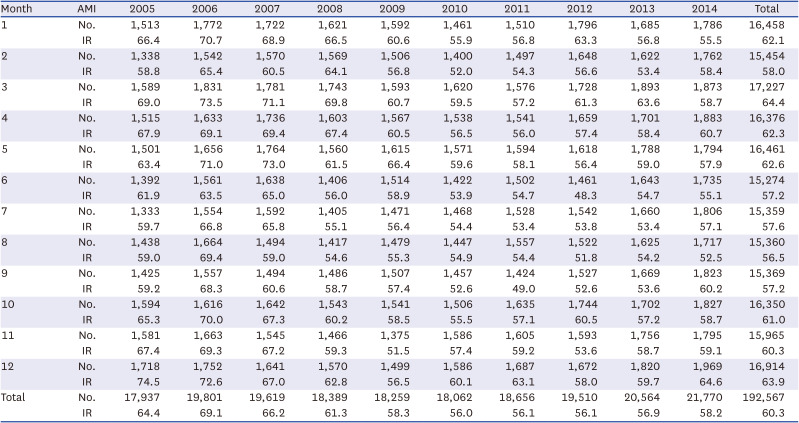




 PDF
PDF Citation
Citation Print
Print



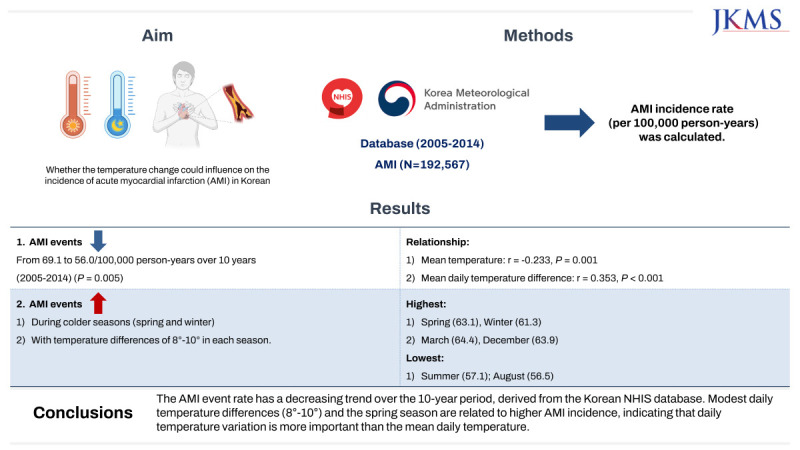
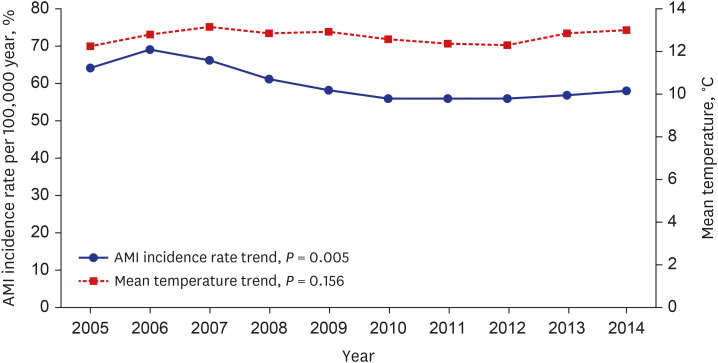
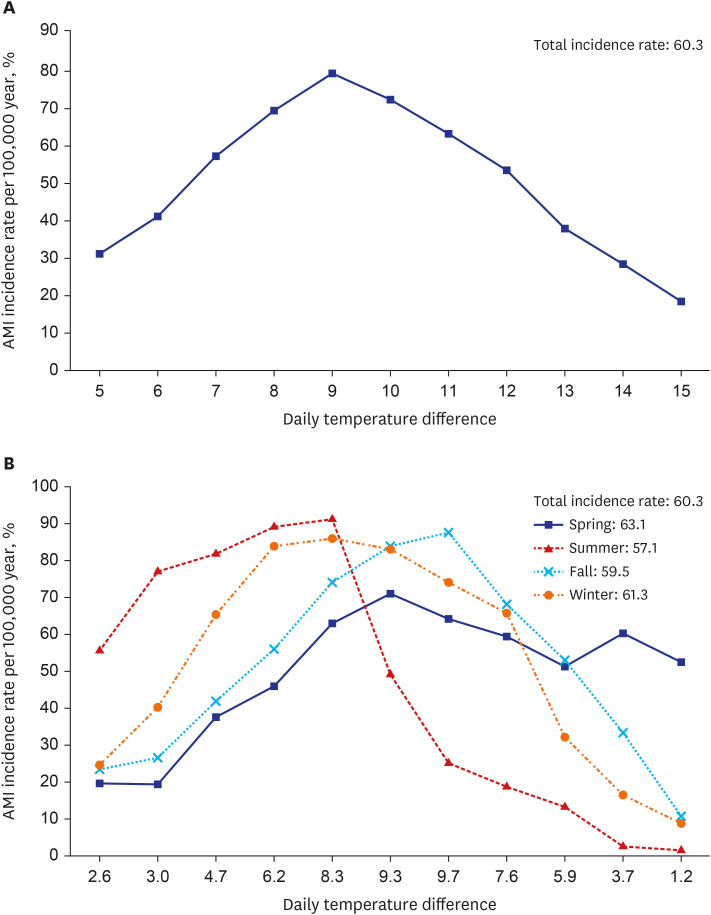
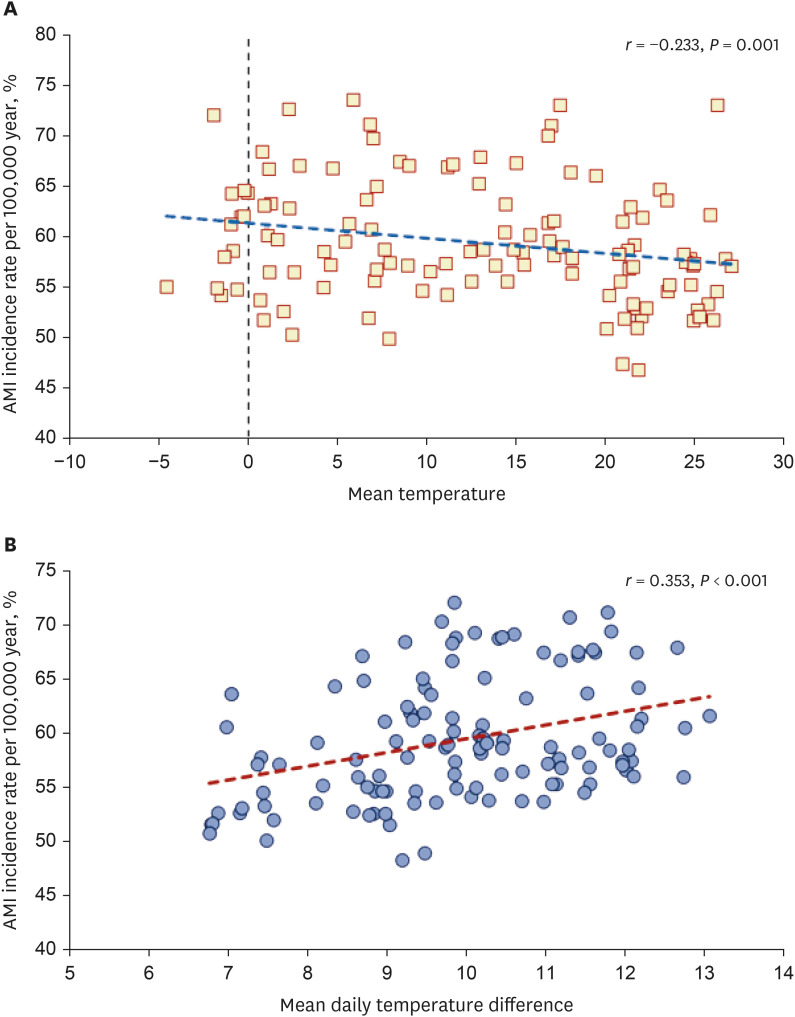
 XML Download
XML Download